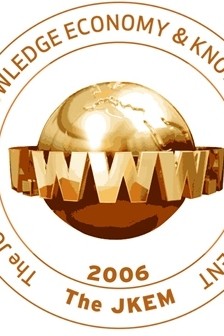THE COMPARISON OF TWO STRATEGIC ALLIANCES IN TERMS OF ORGANIZATIONAL LEARNING AND KNOWLEDGE TRANSFER
Strategic Alliances
THE COMPARISON OF TWO STRATEGIC ALLIANCES IN TERMS OF ORGANIZATIONAL LEARNING AND KNOWLEDGE TRANSFER
___
- Aguilera, Ruth V. (2007). “Translating theoretical logics across borders: organizational characteristics, structural mechanisms and contextual factors in international alliances”, Journal of International Business Studies, Vol.38, pp. 38-46.
- Bignoux, Stephane. (2006). “Short-term strategic alliances: A social exchange perspective”, Management Decision, Vol.44(5), pp. 615-627.
- Czinkota, M., Ronkainen I., Moffett, M., Marinova, S. and Marinov M. (2009). International Business, John
- Wiley & Sons Publication. Denzin, N. K., and Lincoln, Y. S. (1994). “Introduction: Entering the field of qualitative research”. In N. K.
- Denzin and Y. S. Lincoln (Eds.), Handbook of qualitative research (1st ed.; pp. 1–17). Thousand Oaks, CA: Sage. Dyer, Jeffrey H., Kale, Prashant and Singh, Harbir. (2001) “How to make strategic alliances work”, MIT Sloan
- Management Review, Vol.42. pp. 37-43. Genç, Nurullah and Öykü İyigün. (2011). “The role of organizational learning and knowledge transfer in building strategic alliances: A case study”, Procedia Social and Behavioral Sciences, Vol.24(2011), pp. 1124
- Grant, Robert M., Baden-Fuller, Charles. (2004). “A knowledge accessing theory of strategic alliances”, Journal of Management Studies, Vol.41:1. pp. 61-84.
- Gulati, R. (1998). “Alliances and networks”, Strategic Management Journal, Vol.19, pp. 293-317.
- Hall, Wendy. (1995). Managing Cultures Making Strategic Relationships Work. John Wiley & Sons Publication.
- Hamel, Gary. (1991). “Competition for competence and inter-partner learning within international strategic alliances”, Strategic Management Journal, Vol.12, pp. 83-103.
- Huber, George P. (1991). “Organizational learning: the contributing processes and the literatures”, Organization Science, Vol.2, No.1. pp. 88-115.
- Huff, A. S., Floyd, S.W., Sherman, H. D. and Terjesen S. (2009). Strategic Management Logic and Action. John
- Wiley & Sons Publication, pp. 348-360. Kale, Prashant., Singh, Harbir, Perlmutter, Howard. (2000). “Learning and protection of proprietary assets in strategic alliances: building relational capital”, Strategic Management Journal, Vol.21. pp. 217-237.
- Khamseh, Hamid Mazloomi and Jolly, Dominique R. (2008). “Knowledge transfer in alliances: determinant factors”, Journal of Knowledge Management, Vol.12, pp.37-50.
- Kogut, B. (1988). “Joint ventures: theoretical and empirical perspectives”, Strategic Management Journal, Vol.9. pp. 319-332.
- Levitt, Barbara and March, James G. (1988). “Organizational learning”, Annual Review of Sociology, Vol.14, pp. 319-340.
- Marchel C. and S. Owens (2007). “Qualitative research in psychology: Could William James get a job?”, History of Psychology, Vol.10, No.4, pp. 301-324.
- Mohr, J. and R. Spekman (1994). “Characteristics of partnership success”, Strategic Management Journal, Vol.15, pp. 135-152.
- Mowery, David C., Oxley, Joanne E. and Silverman Brian S. (1996). “Strategic alliances and interfirm knowledge transfer”, Strategic Management Journal, Vol.17, p. 77-91.
- Oxley, J. E. (1997). “Appropriability hazards and governance in strategic alliances: a transaction cost approach”.
- Journal of Law Economics and Organization, Vol.13. pp. 389–407. Yaprak, Atilla. (2011). “Dynamic learning and strategic alliances: A commentary essay”, Journal of Business Research, Vol.64(2011), pp. 1128-1130.
- Yoshino, Michael Y. and Rangan, Srinivasa U. (1995). Strategic Alliances An Entrepreneurial Approach to
- Globalization. Harvard Business School Press. http://www.saruhan.com.tr/tr/tarihce.php http://egepen.com/
- Yayın Aralığı: Yılda 2 Sayı
- Başlangıç: 2006
- Yayıncı: İbrahim Güran YUMUŞAK
- CHENG, Ping SHİH, - LİNG, - I, - HSU
GÜNEY KORE’NİN İNOVASYON AKTÖRLERİ: ÜNİVERSİTE, SANAYİ VE KAMU ARAŞTIRMA MERKEZLERİNİN ANALİZİ
Hamza Ateş– Bora Yıldız– Harun YILDIZ, Hamza Ateş, Bora Yıldız, Harun Yıldız
Peter KUCHİNKE, - UN, Yeong PARK
A. Kadir Bin Othman – M. Khirzan Badzli RAHMAN, Abdul Kadir bin Othman, Ariff Md Abdul MALİK, Mohd Khirzan Badzli Abdul Rahman, Samsudin WAHAB
THE RELATIONSHIP BETWEEN KNOWLEDGE SHARING AND NEGATIVE ATTITUDE AGAINST EMPLOYEE MONITORING
Cihan Tınaztepe – Funda Özer– Mehmet Kız YOZGAT, Cihan Tinaztepe, Funda Özer, Mehmet Kiziloğlu, Uğur Yozgat
Pedro FERREİRA, Elizabeth Real De OLİVEİRA
THE COMPARISON OF TWO STRATEGIC ALLIANCES IN TERMS OF ORGANIZATIONAL LEARNING AND KNOWLEDGE TRANSFER
